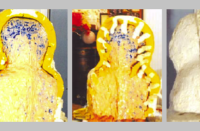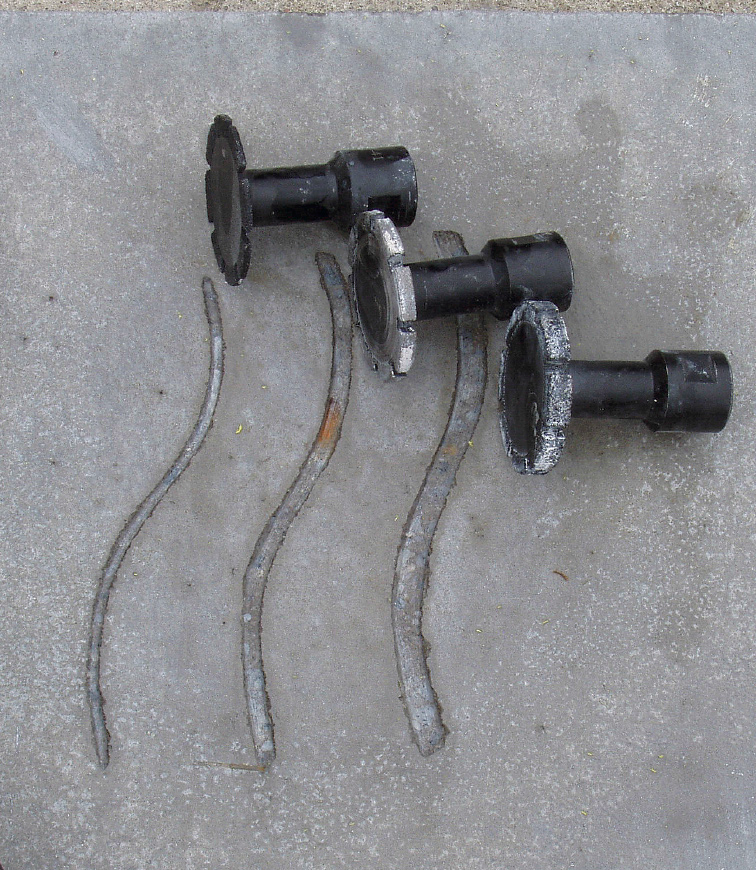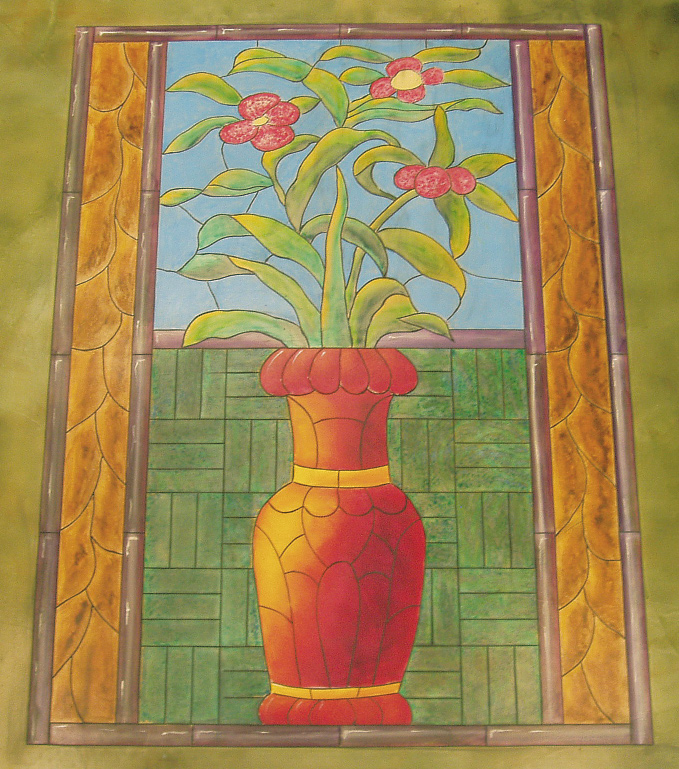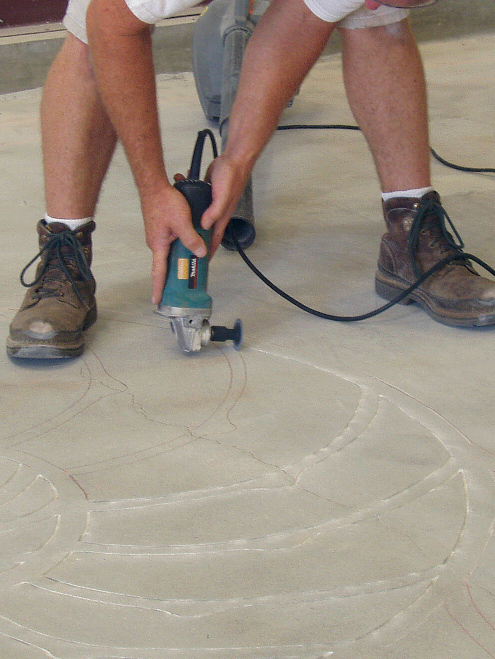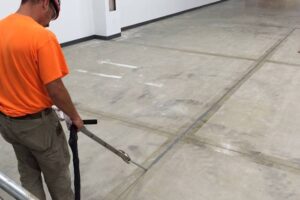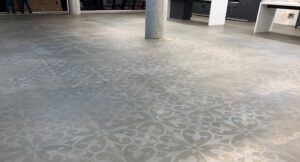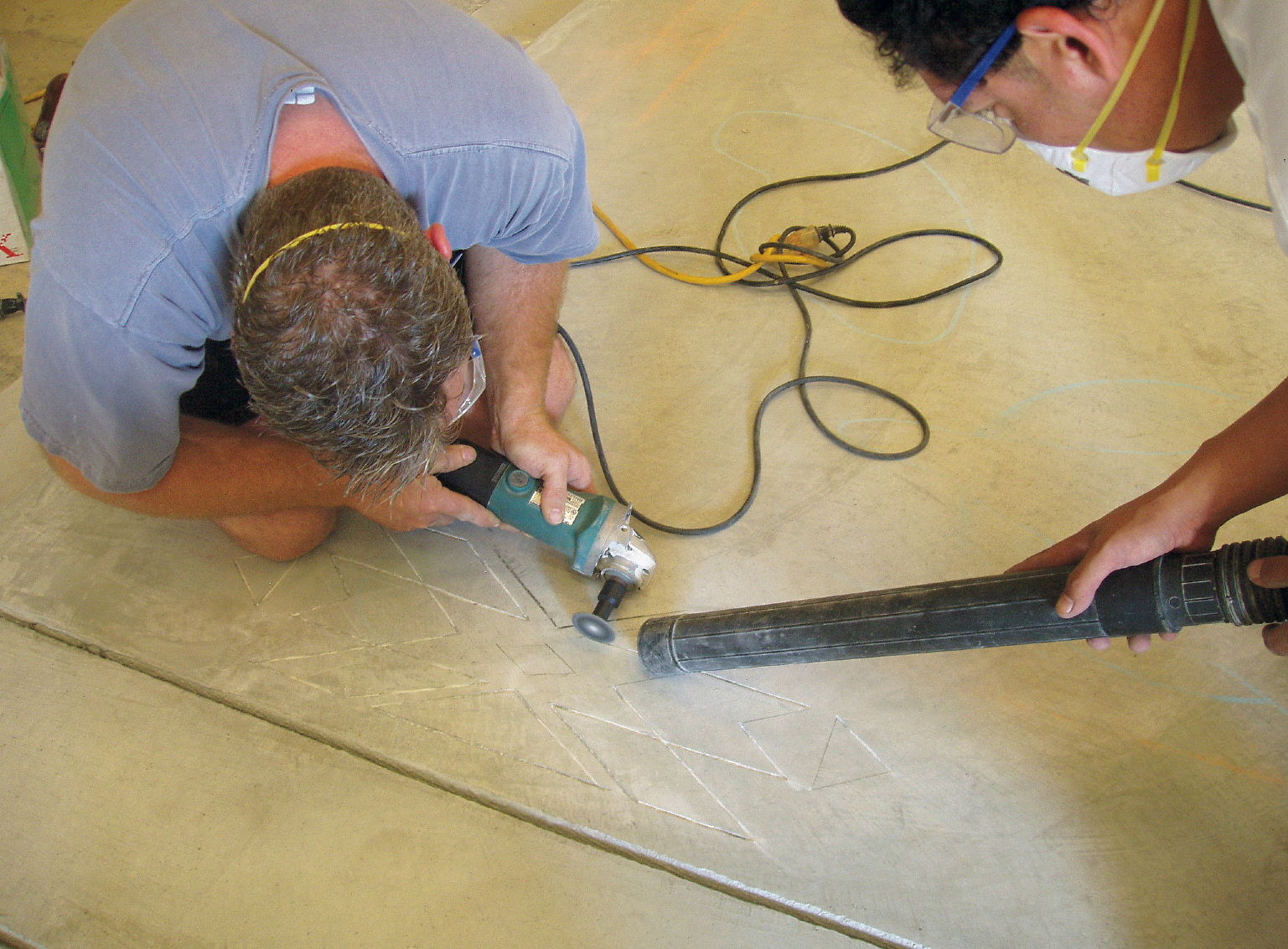
Bob Harris, president of the Decorative Concrete Institute in Temple, Ga., is offering an innovative product to make decorative contractors’ lives a little easier.
His company is the only distributor of a new 2-inch blade that “enables the decorative professional to create tight, detailed graphics that cannot be achieved with 4-inch blades,” Harris says. “You can also use the blade in a sideways fashion as opposed to cutting a line — creating texture in the surface.”
|
|
|
The blade has a 2-inch diameter, with a 2-inch extension that features a thread on the attachment to fit most standard 4-inch grinders. “It does some take some getting used to because of this extension,” Harris says. “Without the extension, the head of the grinder would hit the concrete before the blade touched the surface of the concrete.”
For decorative contractors that have experience cutting, Harris does not recommend the 2-inch blade for just straight cutting or to replace the precision of the 4-inch blade. He says it is best used to create sweeping arcs and radii of detailed graphics.
|
|
|
|
“For students who don’t have much experience cutting, the 2-inch blade is a little less intimidating to use than the 4-inch blade,” says Harris, who teaches workshops and classes at his facility in Temple as well as abroad.
The blade is offered in three different sizes: 1/16-, 1/8- and 1/4-inch. It can be used on most masonry products, but Harris says it works great on cement-based toppings and traditional concrete and concrete countertops.
“This product differs from traditional diamond blades simply because of its compactness,” Harris explains. “The fact that the diameter of the blade is so small enables the artisan to create detailed cuts.”
The blades can be purchased directly from the Decorative Concrete Institute.
? (877) DCI-8080
www.decorativeconcreteinstitute.com


